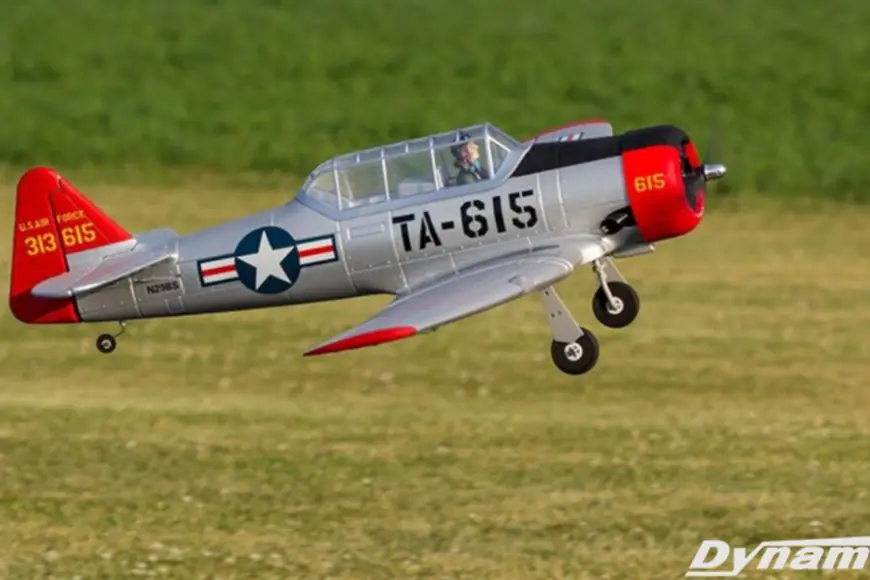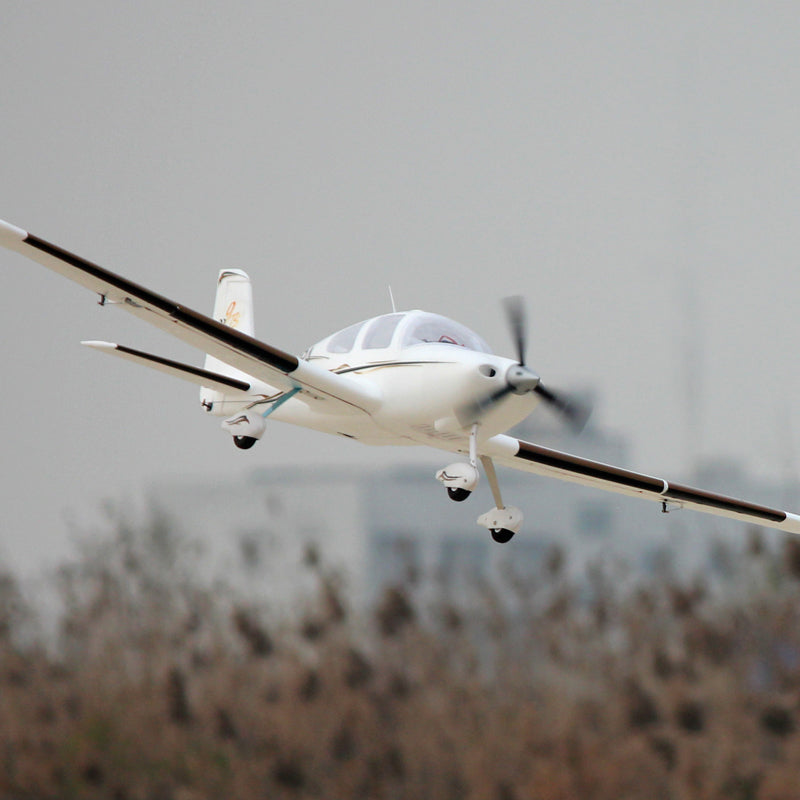How to Choose the Best RC Plane for Beginners
How to Choose the Best RC Plane for Beginners

Selecting the right RC plane as a beginner can feel overwhelming, especially with so many options available. But don't worry—I'll guide you through the process step-by-step and share my personal experience flying the Dynam Cirrus SR22 V3 Trainer, which has become one of my favorite beginner-friendly planes.
Why Choosing the Right RC Plane Matters
When starting out in the world of RC planes, your first choice can make or break your flying experience. A beginner-friendly plane will help you build confidence, develop fundamental skills, and minimize frustration from crashes or complex controls.
Beginner RC planes are designed with stability, ease of use, and durability in mind. These factors are crucial for a positive learning curve.
Key Features to Look for in an RC Plane for Beginners
1. Stability and Ease of Control
A stable plane allows you to focus on learning the basics rather than fighting to keep it in the air. Look for models with:
- High-wing designs: These provide natural stability.
- Gyroscopic stabilizers: Systems like a 6-axis gyro can help maintain balance.
2. Durable Build Materials
Crashes are inevitable, so you'll want a plane made from durable materials like EPO foam. These planes are lightweight yet resilient enough to survive hard landings.
3. Flight Modes
Many beginner planes offer selectable flight modes:
- Beginner mode: Limits control to prevent oversteering.
- Intermediate mode: Gives more control for skill progression.
- Advanced mode: Full manual control for experienced pilots.
4. Electric Power Systems (EP)
Electric planes are easier to maintain and quieter compared to gas-powered models, making them ideal for beginners.
5. Ready-to-Fly (RTF) Configuration
RTF planes come with everything you need, including a transmitter, battery, and charger. This saves time and simplifies the setup process for beginners.
Types of RC Planes to Consider
Trainers
Trainers like the Dynam Cirrus SR22 V3 are specifically designed for beginners. These planes feature high wings, a slower flying speed, and excellent stability.
Gliders
Gliders are known for their smooth, controlled flights and long glide times. They are forgiving and perfect for beginners learning basic controls.
Park Flyers
These smaller planes are designed to fly in small areas, like parks. They are typically lightweight and less intimidating for new pilots.
Micro RC Planes
Compact and lightweight, these planes are great for indoor flying or calm outdoor conditions. However, they may not handle wind as well as larger models.
My Personal Experience with the Dynam Cirrus SR22 V3 Trainer
When I first started flying, I chose the Dynam Cirrus SR22 V3 Trainer, and it was a game-changer. Here's why:
- Ease of Setup: As an RTF model, the Cirrus SR22 came with everything I needed. I had it ready to fly within 30 minutes.
- Stability in the Air: The 6-axis gyro made my first flights surprisingly smooth. Even in light wind, the plane stayed steady, allowing me to focus on mastering basic controls.
- Durability: Like every beginner, I had my fair share of rough landings, but the EPO foam build absorbed the impact and kept the plane intact.
- Aesthetic Appeal: The realistic scale details of the Cirrus SR22 gave me a sense of pride every time I took it to the airfield.
Overall, this plane made my learning experience enjoyable and frustration-free. I highly recommend it to beginners looking for a reliable, forgiving trainer.
Frequently Asked Questions (FAQs)
1. How much should I spend on my first RC plane?
For beginners, a budget of $100–$300 is reasonable. This range offers durable, high-quality RTF planes that are easy to fly.
2. Do I need a flight simulator before flying an RC plane?
While not mandatory, flight simulators are excellent tools for beginners. They let you practice flying without risking damage to your plane.
3. What kind of transmitter should I use?
Most RTF planes come with a basic transmitter. As you progress, you can invest in a programmable transmitter for more advanced planes.
4. Can I fly an RC plane anywhere?
No. You should always check local regulations and avoid flying in restricted areas, near airports, or over crowds.
5. How do I maintain my RC plane?
Regularly inspect your plane for damage, clean it after flights, and store batteries properly to extend their lifespan.
Comparison Table: Top Beginner RC Planes
| Model | Wing Type | Flight Modes | Material | Price Range |
|---|---|---|---|---|
| Dynam Cirrus SR22 V3 | High-wing | Beginner/Intermediate | EPO Foam | $200–$250 |
| HobbyZone Champ S+ | High-wing | Beginner/Intermediate | EPP Foam | $150–$200 |
| E-flite Apprentice S 15e | High-wing | Beginner/Advanced | EPO Foam | $250–$300 |
| Volantex Ranger 600 | High-wing | Beginner/Intermediate | Durable Plastic | $100–$150 |
Tips for Your First Flights
-
Choose a Calm Day
Windy conditions can make it harder to control your plane. Start flying on a calm day for a smoother experience. -
Practice Takeoffs and Landings
Mastering takeoffs and landings is key for building confidence. Use a flat, open area to minimize obstacles. -
Use Beginner Flight Modes
Start with beginner flight modes to avoid over-controlling the plane. As your skills improve, switch to intermediate or advanced modes. -
Fly with an Experienced Pilot
If possible, find an experienced RC pilot to guide you. Their advice can help you avoid common mistakes.
Conclusion
Choosing the best RC plane for beginners is all about finding a model that matches your skill level and provides a forgiving learning experience. Planes like the Dynam Cirrus SR22 V3 Trainer tick all the boxes, offering stability, durability, and ease of use.
If you're just starting out, take your time, do your research, and don’t be afraid to ask for recommendations. Once you're in the air, you'll discover why RC flying is such a rewarding hobby!

 Mike Schenkel
Mike Schenkel 











